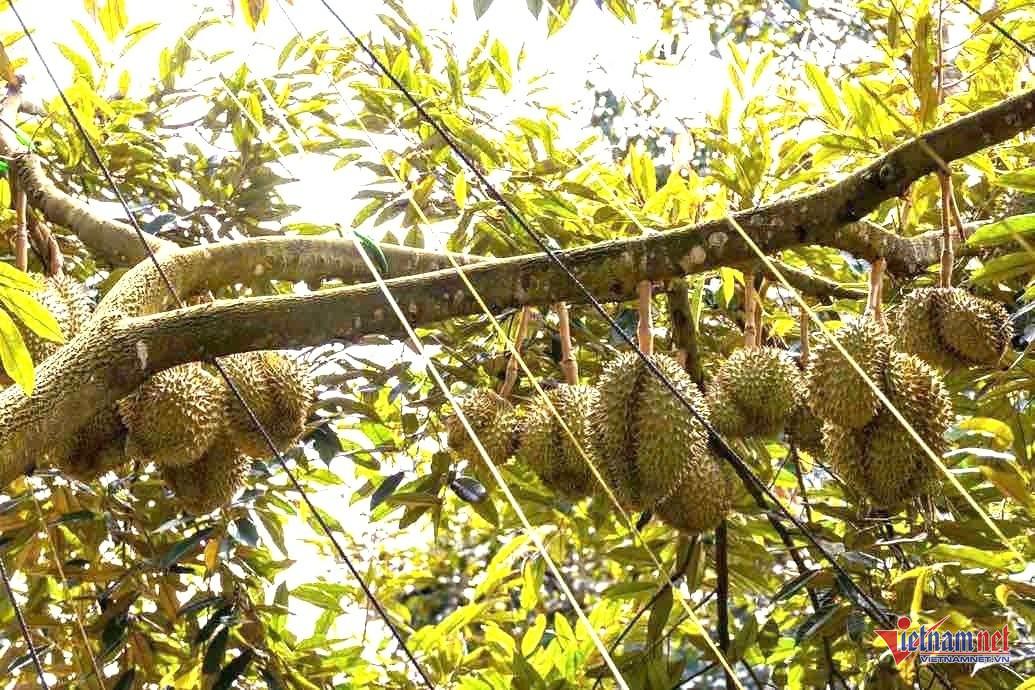As Vietnam’s top durian-producing province, Dak Lak is stepping up stringent quality control measures to protect its durian output, especially with the harvest season approaching in just three months.
The move comes after China flagged several shipments of Vietnamese and Thai durians for containing cadmium and auramine O - both hazardous substances to human health.
Strict control of origins and output

With around 37,300 hectares under cultivation and an estimated yield of 387,000 tons in 2025, Dak Lak leads the country in durian production. In response to safety concerns, Nguyen Thien Van, acting chairman of Dak Lak People’s Committee, confirmed that no samples in the province have tested positive for the banned substances so far.
To avoid counterfeit durian from entering the supply chain, local authorities will closely monitor every approved growing area and strictly control both input and output volumes. “If a farmer’s planting zone is certified for six tons, they can only export that exact amount - anything more will be subject to re-examination,” said Van.
He emphasized that farmers and cooperatives must not use certified growing area codes for fruit sourced elsewhere. Authorities will increase surprise inspections, sampling, and testing to detect any violations. “We must eliminate dishonest practices that could lead to shipment rejections and hurt both farmers and businesses,” he added.
Vu Duc Con, Chairman of the Dak Lak Durian Association, noted that cadmium can originate from soil, water, or fertilizers, while auramine O is often used illicitly to enhance durian color post-harvest. The association is currently collecting samples of soil, water, and fertilizer in key growing areas, with results expected before the harvest begins.
“We strongly advise farmers against using auramine O and remind them it’s banned for a reason,” Con stated. He also raised concerns over unsold, contaminated fruit re-entering the domestic market without regulatory oversight, which poses health risks to consumers.
Farmers call for scientific support
Nguyen Van Tuan, a durian grower in Buon Ma Thuot with 150 trees, expects a harvest of over 10 tons this year. But recent news has left him anxious. “We don’t use auramine O since traders harvest directly from our orchards, but we don’t know if they use it after buying. As for cadmium, it might unintentionally come from fertilizers, water, or soil,” he said.
Tuan urged authorities and scientists to test and assess farming conditions to identify contamination sources. “If it’s the fertilizer, tell us which brands to avoid. If it’s the water or soil, guide us on how to handle it,” he said.
Phan Van Phong, a durian trader and grower in Cu Sue commune, Cư M’gar district, echoed similar concerns. He affirmed his commitment to safe durian practices and denied using auramine O. However, he admitted that cadmium is harder to monitor and called on authorities to pinpoint contamination sources and offer long-term solutions.
“We need clear answers on where the contamination is coming from and practical measures to protect our business,” said Phong.
Since late 2024, China has rejected several Vietnamese durian shipments due to the presence of cadmium and auramine O. Dozens of growing area codes have been suspended - many from Tien Giang province. In response, Chinese customs now mandate that 100% of Vietnamese durian shipments include test certificates confirming the absence of the banned substances. Any detected residue results in immediate suspension of the associated growing area and packing facility.
Hai Duong